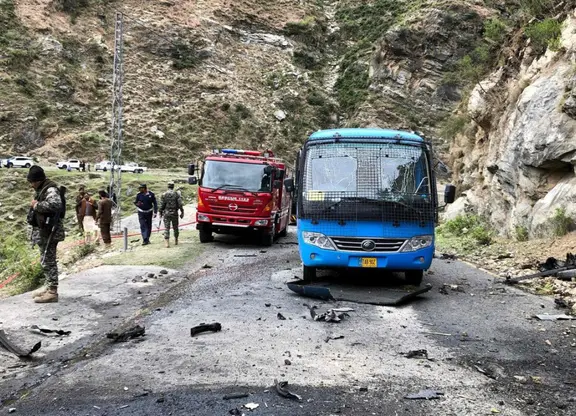On the snowy mountains of the Qinghai-Tibet Plateau, it has become common for flocks of bharals to deny their shy nature by carrying on roaming when saffron-robed figures come close. It speaks volumes about how comfortable the endangered animals have become with the monks who have taken to protecting them.
As the harsh October-May winter season comes to a close, the bharals, or Himalayan blue sheep, seem grateful for the monks' help during a period when they typically struggle for food.
Religious devotees of the Sha-rihu Monastery in Golog Tibetan Autonomous Prefecture of northwest China's Qinghai Province have become feeders and vets for the animal. In the upcoming summer months, delivery season for bharals and Mongolian gazelles, they will also clear the area of the wild dogs that would otherwise act as tough predators.
"We have made friends with the cute little creatures. They are vigilant in nature, but are at ease with us," said Cedain, one of the monks.
"They are spirits on the snow mountain, bringing auspiciousness to the monastery and people," said Cedain, who has spent 26 of his 51 years serving in the monastery.
He and other monks carry pellet feed and forage grass to feed bharals and Mongolian gazelles during the winter, as natural grass withers.
"At first, they were reluctant to eat pellet feed. We mingled it with salt and gave the mixture to the head of the flock. Once the head eats, the rest follow," explained Cedain.
Basic tenets of Buddhism like love, respect and compassion for all living beings give monks a natural alliance with wild animals on the Qinghai-Tibet Plateau, he added.
Since the 1980s, the monastery has run a conservation committee in partnership with herdsmen and students.
It raised money to buy fodder and ensure food supply to the wild animals in the long winter. The local forestry bureau also sends about 12 tonnes of grass feed annually.
And monks have persuaded herdsmen to move their livestock to leave the richest grassland for bharals.
Their current task of removing wild dogs is a tiresome work. It requires them to climb the mountains to catch the canines, load them into vehicles and drop them dozens of kilometers away, ensuring the bharals a safe period of reproduction.
But it is necessary. Another monk, Tseten, recalled seeing a snow leopard killed by wild dogs.
At other times, Sha-rihu Monastery is used as a facility to help bharals back to health. "Whenever we see a bharal attacked by a dog, we climb up the mountain and bring the bharal to the monastery. And we keep it until it is fully recovered," Tseten explained.
The Qinghai forestry authorities have set up a temporary building to serve as a wildlife rescue center in the monastery. Monks and veterinary personnel jointly care for the animals with professional equipment.
Four of the monastery's monks who have trained in traditional Tibetan medicine have also become vets.
The bharal population has now exceeded 30,000 around the monastery, while the number of wild asses and other wild animal is also on the rise.
"In the minds of Tibetan people, we and the wildlife live together on the holy mountain. It is our honor to stay together harmoniously with them under its umbrella," said Cedain.
 简体中文
简体中文





















